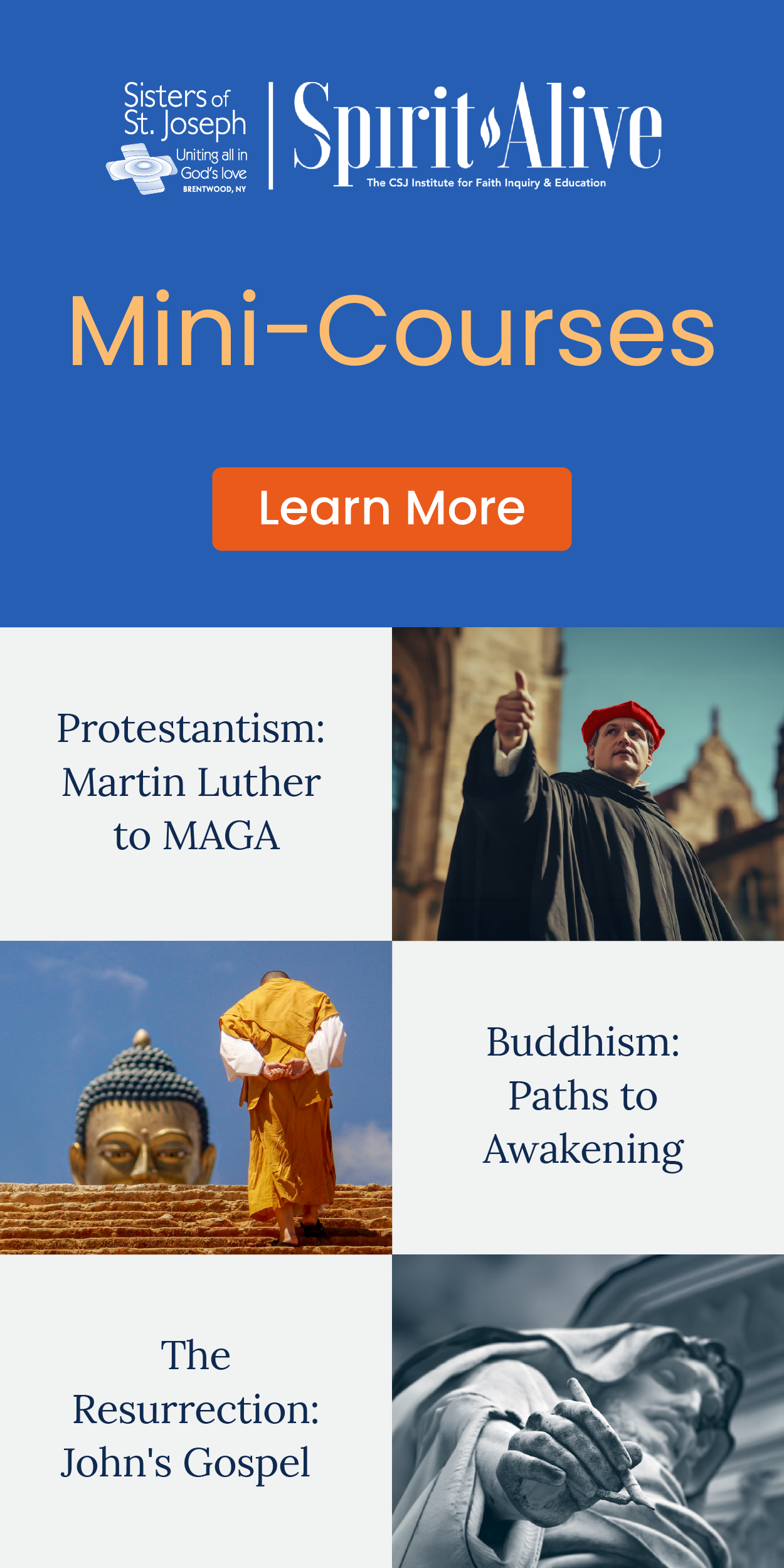After drafting my first formal memoir, You Lied to Me About God: A Memoir (North Atlantic Books), I shared it with one of my assistants, Katie Dougherty Zuercher, to proofread. Her first comment brought a smile to my face: “What if we all wrote our memoirs simply to share them with others in our lives? To get to know each other better?” Katie’s suggestion speaks to the true eloquence of memoir: the inherently healing power of having our stories witnessed by at least one other person.
Memoir writing is a powerful spiritual practice that allows us to examine our lives for the purpose of healing and growth. I’ve learned as a writer, a trauma therapist, and a lifelong spiritual seeker that the real value is in simply sharing the story. We can find our voices and our purposes when we approach the page and notice what is revealed. For many of us, the gold this process mines and refines is a new understanding of our own value and the power of our stories.
Spiritual memoir: a Catholic tradition
The Catholic tradition is rich with examples of personal stories that helped heal both their authors and their readers. Many scholars consider St. Augustine’s Confessions, written between 397 and 400 C.E., to be the first published autobiography. In the 16th century, the Spiritual Exercises, still a source of spiritual rejuvenation, sprang from the journal-keeping of St. Ignatius of Loyola; by examining his own life, Ignatius found principles that apply to us all.
Some modern Catholics, however, especially women, may feel disconnected from these classic spiritual works. St. Augustine’s Confessions, for example, paints women as sources of sin and evil. Some women may find St. Ignatius’ emphasis on self-examination to be shaming rather than healing. Fortunately, other memoirs and autobiographical writings will appeal to women, including classics such as Revelations of Divine Love by Julian of Norwich, St. Teresa of Àvila’s autobiography, and The Story of a Soul by St. Thérèse of Lisieux, as well as more modern works by Dorothy Day and Simone Weil.
But we don’t have to be saints to benefit from examining our lives, nor do we have to be gifted writers. The sacrament of reconciliation is another meaningful way to look back on our lives. It allows us to engage in the holy task of organizing past events and embracing acceptance.
Still, although many modern Catholics benefit from this sacrament, some women feel uncomfortable with the practice because, in its sacramental form, only a male, ordained priest can receive a person’s confession. I am one of these uncomfortable Catholic women, which is one of the many reasons that the expressive arts, specifically memoir writing, appeal to me. Whether or not we formally engage in the sacrament of confession, artistic practices can help us reflect on our own life stories.
How to start your spiritual memoir
If writing out your whole life story feels daunting, consider this simple distinction in definitions: An autobiography is a long masterwork that captures the totality of a person’s life. A memoir, while also self-written, generally reflects upon one period of life or thematic aspect.
While each individual may need something different to get them started writing, focusing on your intention is a solid first step. Some examples of intentions might include, “I am a survivor, and my story is worth sharing,” or “I can speak or write my truth, trusting God to help me navigate the consequences.” (Note: If you are writing as a spiritual practice, I do not advise using intentions focused on worldly performance, such as “My book will sell a million copies” or “I will share insights from my life to make myself rich.”)
Setting the intention can be a process that takes some time. Brainstorm (either verbally with another person or in writing on a page) without censoring yourself, until just the right combination of words gets your attention. Then, after you’ve crafted the statement, you can meditate on it using a practice of your choosing: Dance with it, make visual art with it, take a walk with it, turn it into music, or play with it creatively in some other way. Doing so carries your intention from your mind to your body.
Now it’s time to start writing—and this can be the most daunting hurdle. When I teach writing workshops, I give my students the following prompt for the first 15 minutes of our time together: Just write anything. You might also say a prayer and ask God (or a chosen saint or ancestral guide) to show you what to write. Either practice will help you shift your attention away from the self-consciousness that can hinder creativity.
We all tend to self-censor. We want to write perfectly so we’ll impress our readers. Focusing on our imperfections, however, can tempt us to give up before we even begin.
I often share with my students this definition from the French-Cuban writer Anaïs Nin: “Shame is the lie that someone told you about yourself.”
Nin’s statement can trigger questions that may help you begin writing, such as:
What is the biggest lie someone ever told
you about yourself?
What is the biggest lie someone ever told
you about God?
What is the biggest lie someone ever told
you about yourself in God’s name?
Go with your answers, whatever they are. Don’t censor yourself. (You may even want to explore the source of your perfectionism. The origin story of this trait could wind up being a fascinating chapter in your memoir!)
Where your memoir may take you
Once you’ve begun, memoir writing can take a variety of forms. Your story may flow from you chronologically, but for some folks, a chronological timeline doesn’t make much sense. This may be especially true if their brains are still healing from the impact of trauma. Thematic organization is an option in those cases. In my memoir, the chronology is a bit all over the place, yet the chapters each cover an important theme, such as sexuality, morality, recovery, marriage and family, and gender.
A traditional book may not even be the best format for your story. Be open to other options, such as a long-form poem, a song or collection of songs, or a visual art piece. Many memoirists elect to go the route of collected essays, each of which could stand on its own if needed.
One of the great misconceptions about writing a memoir is that for the work to be valid, it has to be picked up by a publisher. While achieving traditional publication and recognition is a goal you certainly have a right to pursue, do not let the daunting prize at the end deprive you of the journey, the process of sharing what needs to see the light. Mainstream publication plays into the capitalist idea that book sales and other performative metrics are the gold standards of a writer’s value.
In today’s world, the independent publishing route is a practical option that lets the author avoid the red tape and risk of working with a publisher. This choice might also be appropriate if your intention is to share your life with only a select group of readers.
A voice does not have to be famous for it to be relevant. Your story need not be perfectly composed to have spiritual value. Be honest, seek divine insight, and don’t listen to critics, especially the one who lives inside you.
This article also appears in the June 2025 issue of U.S. Catholic (Vol. 90, No. 6, pages 45-46). Click here to subscribe to the magazine.
Image: Unsplash














Add comment